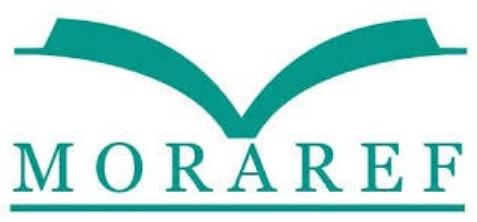Analysis of Investment Decisions at BMT Latansa Gontor Ponorogo
Abstract
Keywords
Full Text:
PDFReferences
Abbass, K. & Tanveer, A. (2019). Factors affecting the adoption of Islamic banking of Pakistan. Journal of Islamic Banking and Finance, 36 (3), 83-101.
Ajzen, I. (1991). The theory of planned behavior. Organizational behavior and human decision processes, 50 (2), 179-211.
Ali, Q., Yaacob, H.B. & Mahalle, N. (2019). An empirical investigation of Islamic banking adoption in Brunei. COMSATS Journal of Islamic Finance, 4 (1), 24-45.
Besar, M., Sukor, M.E.A., Muthalib, N.A. & Gunawa, A.Y. (2009). The practice of shariah review as undertaken by Islamic banking sector in Malaysia. International Review of Business Research Papers, 5, 294-306.
Bianchi, E., Bruno, J.M. & Sarabia-Sanchez, F.J. (2019). The impact of perceived CSR on corporate reputation and purchase intention. European Journal of Management and Business Economics.
Chin, W. W. (1998). The partial least squares approach to structural equation modeling. Modern methods for business research, 295 (2), 295-336.
Croy, G., Gerrans, P. & Speelman, C. (2010). The role and relevance of domain knowledge, perceptions of planning importance, and risk tolerance in predicting savings intentions. Journal of Economic Psychology, 31 (6), 860-871.
Dusuki, A.W. & Abdullah, N.I. (2007). Why do Malaysian customers patronise Islamic banks?. International Journal of Bank Marketing, 25 (3), 142-160.
Effendi, I., Murad, M., Rafiki, A., & Lubis, M. M. (2020). The application of the theory of reasoned action on services of Islamic rural banks in Indonesia. Journal of Islamic Marketing.
Eisingerich, A.B. & Bell, S.J. (2008). Perceived service quality and customer trust: does enhancing customers’ service knowledge matter?. Journal of Service Research, 10 (3), 256-268.
Ganesan, Y., Pitchay, A. B. A., & Nasser, M. A. M. (2020). Does intention influence the financial literacy of depositors of Islamic banking? A case of Malaysia. International Journal of Social Economics, 47 (5), 675-690.
Hassan, H. A., & Abbas, S. K. (2019). Factors influencing the investors’ intention to adopt Takaful (Islamic insurance) products: a survey of Pakistan. Journal of Islamic Marketing.
Hati, S. R. H., Wibowo, S. S., & Safira, A. (2020). The antecedents of Muslim customers’ intention to invest in an Islamic bank’s term deposits: evidence from a Muslim majority country. Journal of Islamic Marketing.
Hoq, M.Z., Sultana, N. & Amin, M. (2010). The effect of trust, customer satisfaction and image on customers’ loyalty in Islamic banking sector. South Asian Journal of Management, 17 (1), 70-93.
Jaffar, M.A. & Musa, R. (2016). Determinants of attitude and intention towards Islamic financing adoption among Non-Users. Procedia Economics and Finance, 37 (16), 227-233.
Janah, N., Medias, F., & Pratiwi, E. K. (2020). The intention of religious leaders to use Islamic banking services: the case of Indonesia. Journal of Islamic Marketing.
Kaakeh, A., Hassan, M.K. & Almazor, S.F.V.H. (2019). Factors affecting customers’ attitude towards Islamic banking in UAE. International Journal of Emerging Markets, 14 (4), 668-688.
Muhamad, R. (2015). Shariah compliance process and corporate governance in Islamic banking institutions (IBIs): a proposed model. Journal of Accounting Perspectives, 4, 36-48.
Muslim, A., Zaidi, I. and Rodrigue, F. (2013). Islamic banks: contrasting the drivers of customer satisfaction on image, trust, and loyalty of muslim and non-muslim customers in Malaysia. International Journal of Bank Marketing, 31 (2), 79-97.
OJK. (2020). Statistik IKNB Syari'ah Periode April 2021. https://www.ojk.go.id/id/kanal/syariah/data-dan-statistik/iknb-syariah/Pages/Statistik-IKNB-Syariah-Periode-April-2021.aspx
Saleh, M.A., Quazi, A., Keating, B. & Gaur, S. (2017). Quality and image of banking services: a comparative study of conventional and Islamic banks. International Journal of Bank Marketing, 35 (6), 878-902.
Stone, R.N. & Grønhaug, K. (1993). Perceived risk: further considerations for the marketing discipline. European Journal of Marketing, 27 (3), 39-50.
Suhartanto, D. (2019). Predicting behavioural intention toward Islamic bank: a multi-group analysis approach. Journal of Islamic Marketing.
Tsiotsou, R. (2006). The role of perceived product quality and overall satisfaction on purchase intentions. International Journal of Consumer Studies, 30 (2), 207-217.
DOI: http://dx.doi.org/10.31332/lifalah.v6i2.3427
Copyright (c) 2022 Apriliana Ika Kusumanisita, Lathiefa Rusli, Raditya Iqbal Anugrah

This work is licensed under a Creative Commons Attribution-ShareAlike 4.0 International License.
Li Falah : Jurnal Studi Ekonomi dan Bisnis Islam, Indexed In
Accredited By
View My Stats
Organized by : Fakultas Ekonomi dan Bisnis Islam
Published by : Institut Agama Islam Negeri Kendari
Jl. Sultan Qaimuddin No. 17 Baruga Kota Kendari Provinsi Sulawesi Tenggara
phone. +62401-3193710
Fax. +62401-3193710
Email: [email protected]



















